Traditional medicinal plant knowledge and use by local healers in Sekoru District, Jimma Zone, Southwestern Ethiopia
- PMID: 17547765
- PMCID: PMC1905946
- DOI: 10.1186/1746-4269-3-24
Traditional medicinal plant knowledge and use by local healers in Sekoru District, Jimma Zone, Southwestern Ethiopia
Abstract
The knowledge and use of medicinal plant species by traditional healers was investigated in Sekoru District, Jimma Zone, Southwestern Ethiopia from December 2005 to November 2006. Traditional healers of the study area were selected randomly and interviewed with the help of translators to gather information on the knowledge and use of medicinal plants used as a remedy for human ailments in the study area. In the current study, it was reported that 27 plant species belonging to 27 genera and 18 families were commonly used to treat various human ailments. Most of these species (85.71%) were wild and harvested mainly for their leaves (64.52%). The most cited ethnomedicinal plant species was Alysicarpus quartinianus A. Rich., whose roots and leaves were reported by traditional healers to be crushed in fresh and applied as a lotion on the lesions of patients of Abiato (Shererit). No significant correlation was observed between the age of traditional healers and the number of species reported and the indigenous knowledge transfer was found to be similar. More than one medicinal plant species were used more frequently than the use of a single species for remedy preparations. Plant parts used for remedy preparations showed significant difference with medicinal plant species abundance in the study area.
Figures
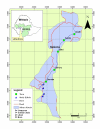
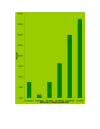
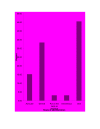
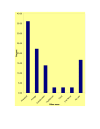
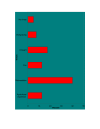
Similar articles
-
Ethnomedicinal plants used by the people of Manang district, central Nepal.J Ethnobiol Ethnomed. 2006 Oct 4;2:41. doi: 10.1186/1746-4269-2-41. J Ethnobiol Ethnomed. 2006. PMID: 17020612 Free PMC article.
-
Medicinal plants of the Shinasha, Agew-awi and Amhara peoples in northwest Ethiopia.J Ethnopharmacol. 2007 Apr 4;110(3):516-25. doi: 10.1016/j.jep.2006.10.011. Epub 2006 Oct 20. J Ethnopharmacol. 2007. PMID: 17101251
-
Ethnobotanical survey of medicinal plants used by Bapedi healers to treat diabetes mellitus in the Limpopo Province, South Africa.J Ethnopharmacol. 2012 May 7;141(1):440-5. doi: 10.1016/j.jep.2012.03.008. Epub 2012 Mar 16. J Ethnopharmacol. 2012. PMID: 22430018
-
Treatment of malaria and related symptoms using traditional herbal medicine in Ethiopia.J Ethnopharmacol. 2018 Mar 1;213:262-279. doi: 10.1016/j.jep.2017.10.034. Epub 2017 Nov 2. J Ethnopharmacol. 2018. PMID: 29102764 Review.
-
Plants used to treat malaria in Nyakayojo sub-county, western Uganda.J Ethnopharmacol. 2011 Sep 1;137(1):154-66. doi: 10.1016/j.jep.2011.05.002. Epub 2011 May 6. J Ethnopharmacol. 2011. PMID: 21575702 Review.
Cited by
-
In Vivo Antimalarial Activity of the 80% Methanolic Root Bark Extract and Solvent Fractions of Gardenia ternifolia Schumach. & Thonn. (Rubiaceae) against Plasmodium berghei.Evid Based Complement Alternat Med. 2018 Jun 12;2018:9217835. doi: 10.1155/2018/9217835. eCollection 2018. Evid Based Complement Alternat Med. 2018. PMID: 30008788 Free PMC article.
-
African mistletoes (Loranthaceae); ethnopharmacology, chemistry and medicinal values: an update.Afr J Tradit Complement Altern Med. 2013 May 16;10(4):161-70. doi: 10.4314/ajtcam.v10i4.26. eCollection 2013. Afr J Tradit Complement Altern Med. 2013. PMID: 24146518 Free PMC article. Review.
-
Ethnobotanical study of medicinal plants used against human ailments in Gubalafto District, Northern Ethiopia.J Ethnobiol Ethnomed. 2017 Oct 4;13(1):55. doi: 10.1186/s13002-017-0182-7. J Ethnobiol Ethnomed. 2017. PMID: 28978342 Free PMC article.
-
The ethnomedicine of the Haya people of Bugabo ward, Kagera Region, north western Tanzania.J Ethnobiol Ethnomed. 2009 Aug 31;5:24. doi: 10.1186/1746-4269-5-24. J Ethnobiol Ethnomed. 2009. PMID: 19715617 Free PMC article.
-
Indigenous medicinal plants used in folk medicine for malaria treatment in Kwara State, Nigeria: an ethnobotanical study.BMC Complement Med Ther. 2023 Sep 16;23(1):324. doi: 10.1186/s12906-023-04131-4. BMC Complement Med Ther. 2023. PMID: 37716985 Free PMC article.
References
-
- Kebebew F, Addis G. Utilization and conservation of medicinal plants in Ethiopia. In: Abebe D, editor. Proceedings of the workshop on Development and Utilization of Herbal Remedies in Ethiopia: Addis Ababa. Ethiopian Health and Nutrition Institute; 1996. pp. 46–52.
-
- Abbink J. Medicinal and ritual plants of the Ethiopian Southwest: an account of recent research. Indigenous knowledge and Development Monitor. 1995;3:6–8.
-
- Cunningham AB. Applied ethnobotany: People, wild plant use and conservation. London and Sterling, VA: Earthscan Publications Ltd; 2001.
-
- Abebe D, Ayehu A. Medicinal plants and enigmatic health practices of Northern Ethiopia Addis Ababa: BSPE. 1993.
-
- Martin GJ. Ethnobotany: a methods manual. London, UK: Chapman and Hall; 1995.
Publication types
MeSH terms
Substances
LinkOut - more resources
Full Text Sources
Medical

